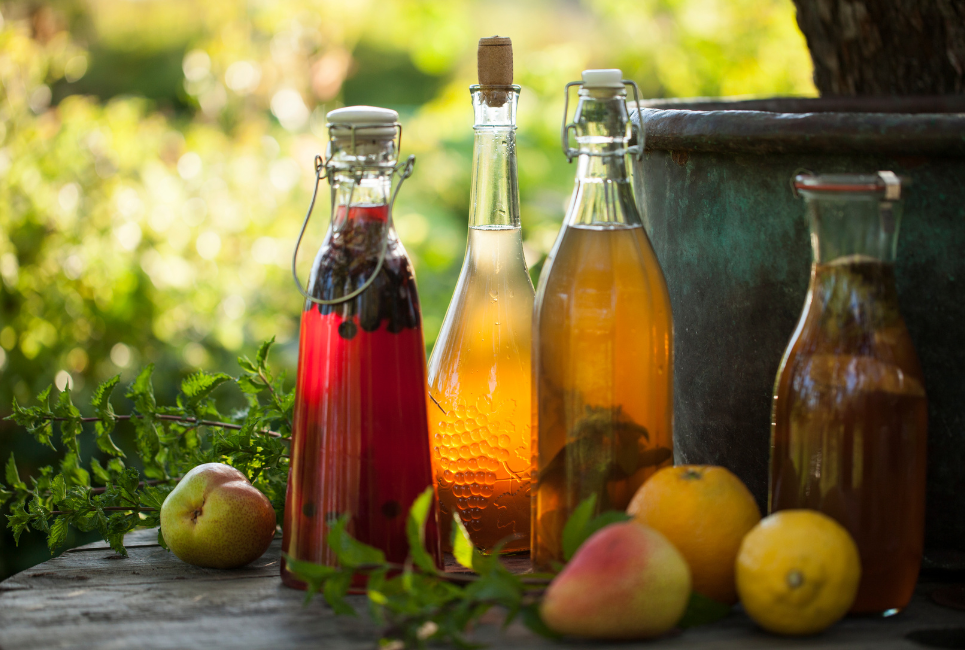Are you looking to try some delicious and healthy fermented drinks? If so, you have come to the right place. This blog post will discuss some of the best-fermented drinks you can try now.
We will also provide information on how to make these drinks at home. So, we have something for you, whether you are a beginner or an experienced fermenter. So, let’s get started!
What Is A Fermented Drink?
Fermented drinks are beverages that have been produced through the process of fermentation. This means that the drink has been exposed to microorganisms, such as bacteria and yeast, which break down the sugar in the drink and create ethanol and carbon dioxide.
The result is a delicious and healthy beverage with various potential health benefits.
History and Heritage of Fermented Drinks
Fermentation has been a part of human development since ancient times. Our ancestors would have never discovered alcohol without the help of these living organisms, so it is no wonder they are still present today!
Fermented foods like bread or fruit date back nine thousand years into prehistory – long before any other formable drink was created in its place by humans who lived on this planet then.
Benefits Of Fermented Drinks

Better Food Digestion
Fermentation is how certain bacteria convert carbohydrates into alcohol or acids.
For instance, in yogurt, this can be done through lactose conversion, which makes for easier consumption by those who suffer from intolerance to dairy products.
The bacteria in your stomach are doing all sorts of tricks to help you digest food.
They convert specific components into acids or alcohol, making them less problematic for people who cannot consume these sugars because their bodies already produce enough enzymes!
More Bioactive Compounds and Vitamins
The process of fermentation not only causes chemical changes but also produces vitamins such as folate and riboflavin. And studies have shown that certain types of lactic acid bacteria synthesize these nutrients during fermentation!
Safer Food and Longer Shelf-life
Preserves are an excellent way to sake-keep fermented foods for long periods. Fermentation promotes good bacteria and prevents bad ones from growing in your refrigerator or jarred products, keeping them fresh!
Fewer Anti-Nutrients
Fermentation is a great way to reduce the concentration of anti-nutrients like lectins and phytates, which can block your normal absorption of nutrients in your gut.
What Do Fermented Drinks Do To Your Body?

Fermented drinks like beer, wine, and kombucha have several potential health benefits, including improved gut health, reduced inflammation, and higher levels of antioxidants.
They can also help to increase your nutrient absorption, promote better sleep, and boost your immune system.
However, fermented drinks also come with a few potential risks. For example, excessive alcohol consumption can damage your liver and lead to addiction.
And wines that are high in sulfites may cause allergic reactions in some people. So it’s important to drink these fermented beverages in moderation and be aware of their potential risks and benefits.
How often Should You Drink Fermented Drinks?
It is recommended that you drink fermented drinks every day for the best results. They are also a source of probiotics, beneficial bacteria that help keep your gut healthy.
Drinking fermented drinks daily can seem like a lot of work, but there are many easy and delicious ways to include them in your diet.
Which Beverage Is Naturally Fermented?
Answer: cider, beer, wine, mead, sake, coffee, tea, and yogurt.
While many beverages can be fermented, some are done so naturally due to the presence of wild yeast or bacteria.
Others must have the yeast or bacteria introduced to undergo fermentation. Nearly all fruits can be made into a fermented beverage, from grape juice becoming wine to apple cider undergoing alcohol fermentation. Different vegetables can also become alcoholic drinks; think of kimchi juice transforming into sherbet!
Although milk cannot be turned into alcohol through fermentation alone (lactic acid fermentation will only make yogurt), adding milk along with grains and water can create soured fermented milk beers like Pitusiyah and Kaffir Lime Beer.
Here Are 40 Of The Most Popular And Healthiest Fermented Drinks
1- Kombucha
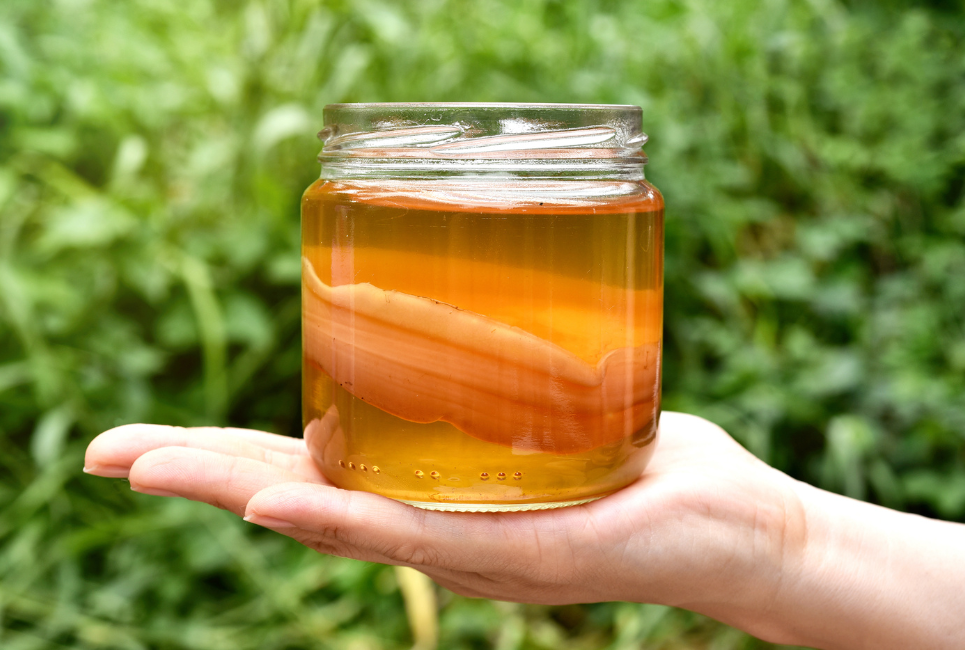
Kombucha is a fermented tea that has been consumed for centuries. The fermentation process produces probiotics and enzymes that are beneficial for gut health.
The ingredients in kombucha include black tea, sugar, and SCOBY (a Symbiotic Colony of Bacteria and Yeast). The SCOBY consumes sugar during fermentation and produces probiotics and carbon dioxide.
2- Boza

Boza is a fermented drink that has been around since the middle ages. It is made from wheat, millet, or buckwheat flour and yeast, and sometimes it also includes fruits or berries. The drink has a slightly sour taste and a thick consistency.
It is thought that Boza may have originated in the Middle East or Central Asia, and it spread throughout Europe and Russia during the Ottoman Empire. It is popular in Eastern Europe, the Balkans, Turkey, Central Asia, and India.
3- Kefir
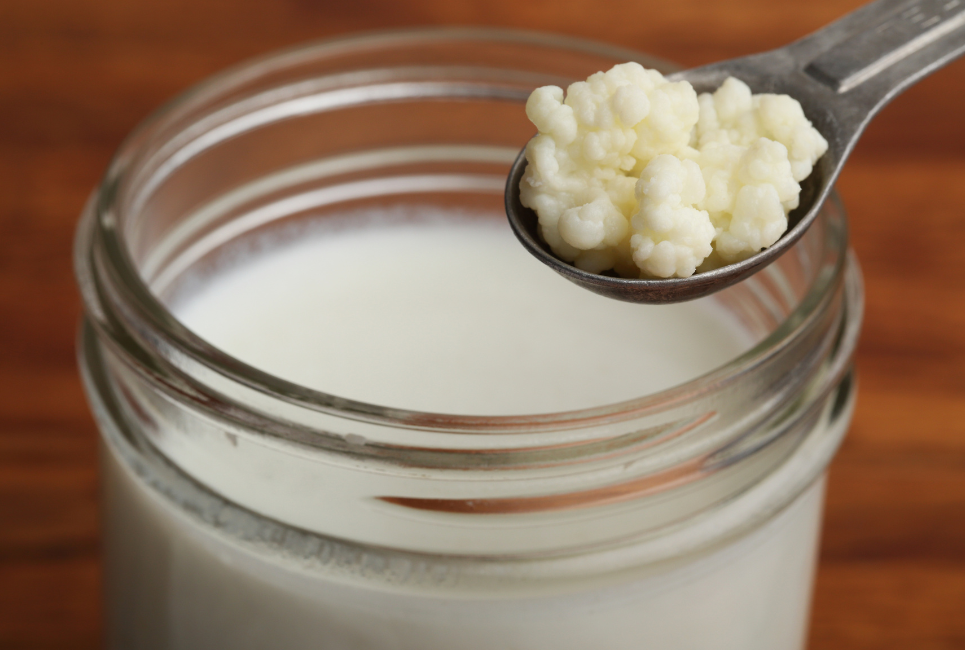
Kefir is a fermented drink that originated in the Caucasus Mountains of Eastern Europe. It is made from cow, goat, or sheep’s milk cultured with kefir grains. These grains are a mix of lactic acid bacteria and yeasts, and they help to give water kefir its characteristic tangy flavor.
It was originally made by soaking water kefir grains in milk and then allowing the mixture to ferment.
This traditional method is still used, though many commercial water kefir brands are now available. The fermentation process breaks down the lactose in milk, making it easier for lactose-intolerant people to digest.
Also read: Milk Kefir vs Water Kefir | Key Differences & Potential Benefits
4- Lassi
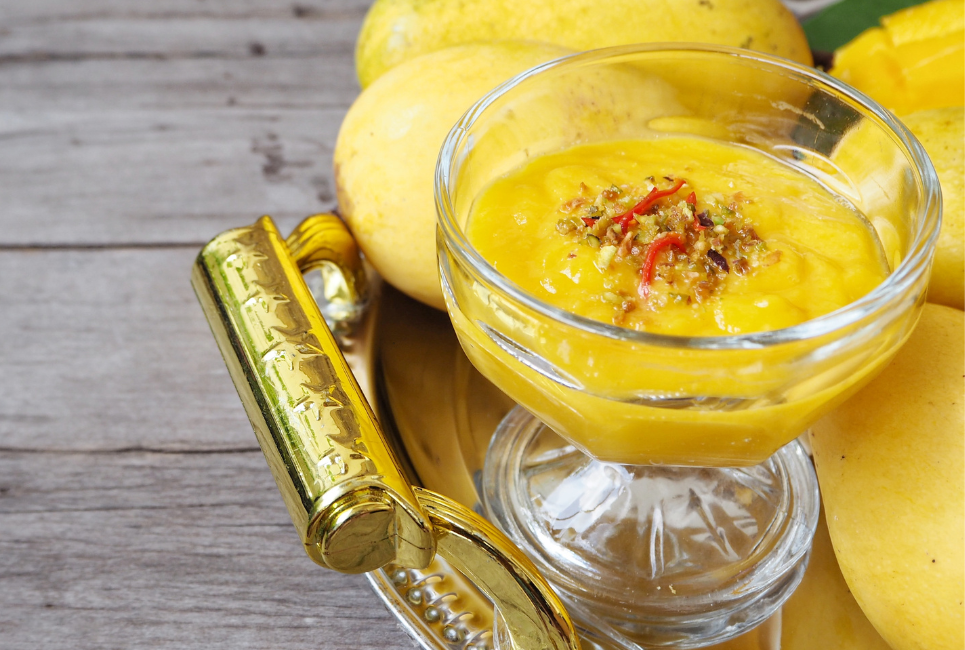
Lassi is a fermented yogurt-based drink from the Indian subcontinent. It is traditionally made by blending yogurt, water, spices, and sometimes fruit.
The history of Lassi is believed to date back to Vedic times in India (1500-1000 BCE). Lassi was created as a refreshing drink for India’s hot climate. However, over time it has become popular all over the world.
There are many different types of Lassi, depending on the ingredients used. The most common elements in Lassi are yogurt, water, spices (usually cardamom), and sugar or salt. Some recipes also call for adding fruit, such as mango or banana.
5- Ginger Beer

Ginger beer is a drink made from ginger, yeast, and sugar. The ginger is either ground or juiced and then mixed with water, sugar, and yeast. The mixture is allowed to ferment for a few days, then strained and bottled.
The origins of ginger beer are murky, but it is thought to have originated in England in the early 1800s. It became popular because it was a non-alcoholic drink that both children and adults could enjoy.
Also read: Ginger Beer vs Ginger Ale: Differences And Similarities
6- Sima
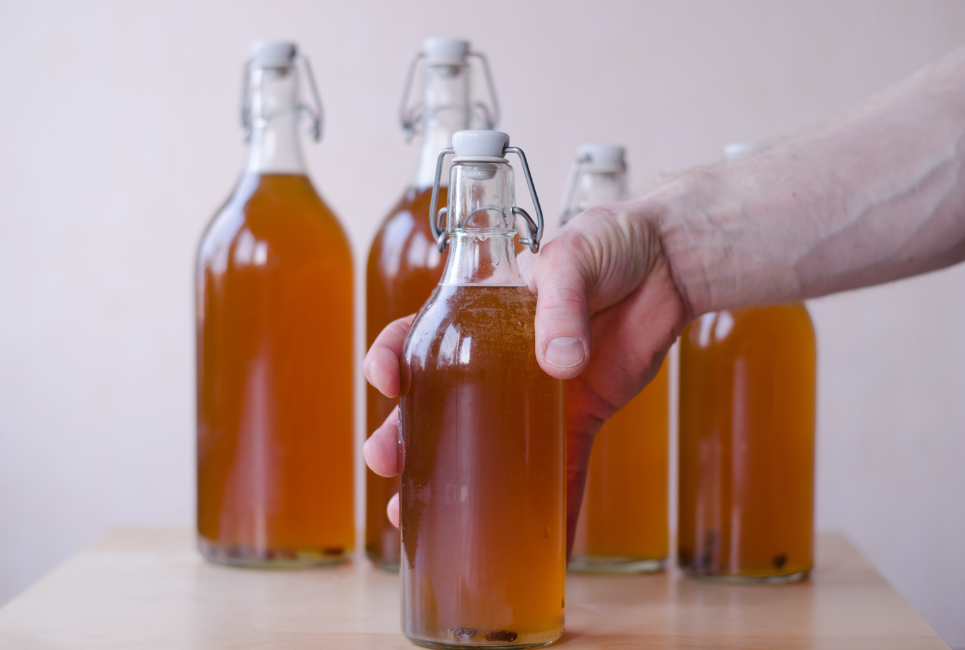
Sima is a lightly fermented apple drink popular in Finland. It is made by leaving steamed apples to ferment for a few days, then adding yeast and water. Sima has a light, cider-like taste and is traditionally enjoyed during May Day celebrations.
In the past, sima was usually made with sweet berries, honey, and apples. Today, however, it is typically made with just apples.
The ingredients of sima are simple: water, sugar, yeast, and apples. However, there is some debate about the best way to make it. Some people prefer to use only fresh apples, while others like to add in some apple cider or juice concentrate for sweetness and extra flavor.
7- Root Beer
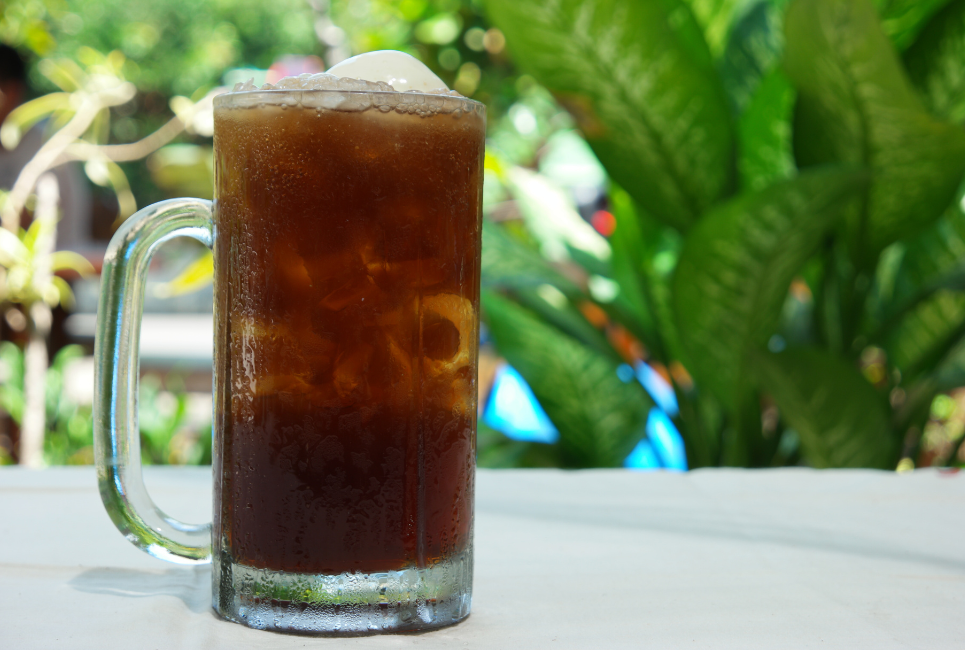
The first record of root beer is from 17th-century colonial America. It was a drink made by Native Americans and early settlers, who brewed it from the sap of the sassafras tree.
The ingredients in root beer depend on the recipe but typically include some combination of water, sugar, spices (such as ginger and wintergreen), and sassafras or other roots or barks.
Fermentation by yeast produces carbon dioxide gas and alcohol. The drink has a sweet/sour taste and is sometimes effervescent.
8- Pulque

Pulque is a traditional alcoholic beverage made from the fermented sap of the maguey (agave) plant. The sap is collected, flavored with fruits or spices, and then fermented. The drink has been produced in Mexico for centuries and is now gaining popularity in other countries.
The fermentation process produces a slightly sour and effervescent drink with a taste reminiscent of yogurt, apple cider, or champagne.
To create cocktails, pulque can be consumed straight or mixed with fruit juices or other liquors. It is typically served cold or at room temperature.
9- Probiotic Lemonade
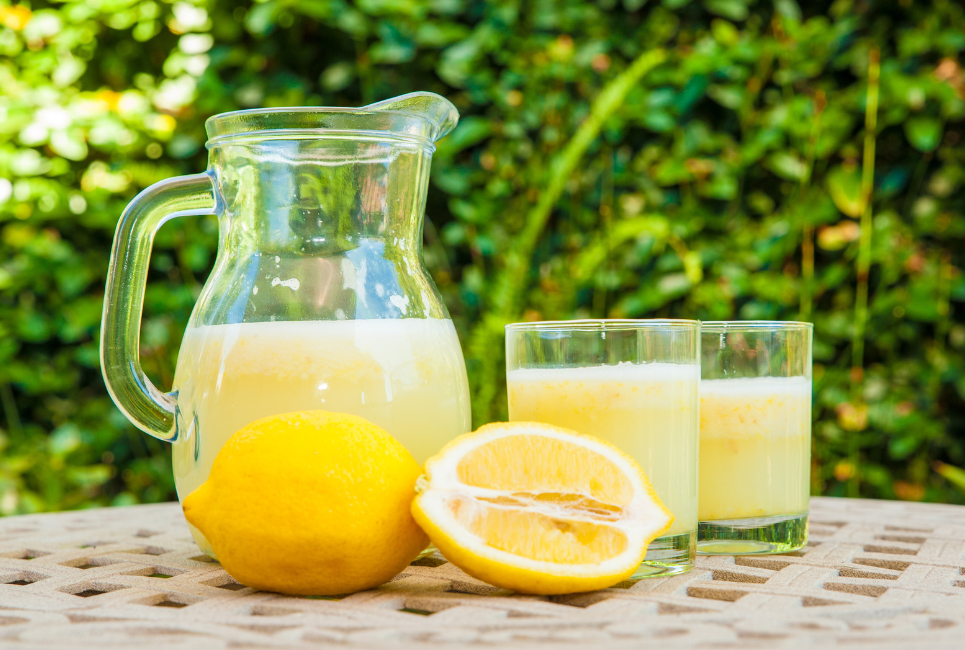
The history of probiotic lemonade fermented drink dates back to ancient times when the people of India and China first started cultivating and using lemons for their health benefits.
These days, probiotic lemonade is enjoyed by people around the world for its refreshing taste and health benefits.
The main ingredient in probiotic lemonade is, of course, lemon juice. Lemon juice is rich in Vitamin C, known for its immune-boosting properties.
In addition, lemon juice contains citric acid and enzymes that help promote digestive health. To these healthy ingredients, Probiotic drinks add live cultures or “probiotics” that are beneficial for gut health.
10- Ayran

Ayran is a traditional yogurt-based fermented drink from the Middle East and Central Asia. It is made by blending yogurt with water, salt, and sometimes spices. The resulting mixture is then left to ferment for a while, typically 24 hours.
The history of Ayran stretches back thousands of years, and it is believed to have originated in the mountainous regions of the Caucasus.
In its earliest form, it was simply yogurt mixed with water. Salt was added later as a preservative, and spices like mint or garlic eventually became popular.
11- Cider

Cider is a fermented alcoholic beverage made from apples. Apples are crushed, and their juice is allowed to ferment, often with the addition of yeast. The result is a tart, slightly effervescent drink that has been enjoyed for centuries.
The history of cider can be traced back to ancient times. The first recorded mention of cider was by the Greek historian Xenophon in 400 BCE.
Today, cider is enjoyed around the world. It is prevalent in the UK, Ireland, France, and the United States.
Also read: Kombucha vs Apple Cider Vinegar: Which is best for you? Key Differences & Similarities
12- Ginger Ale
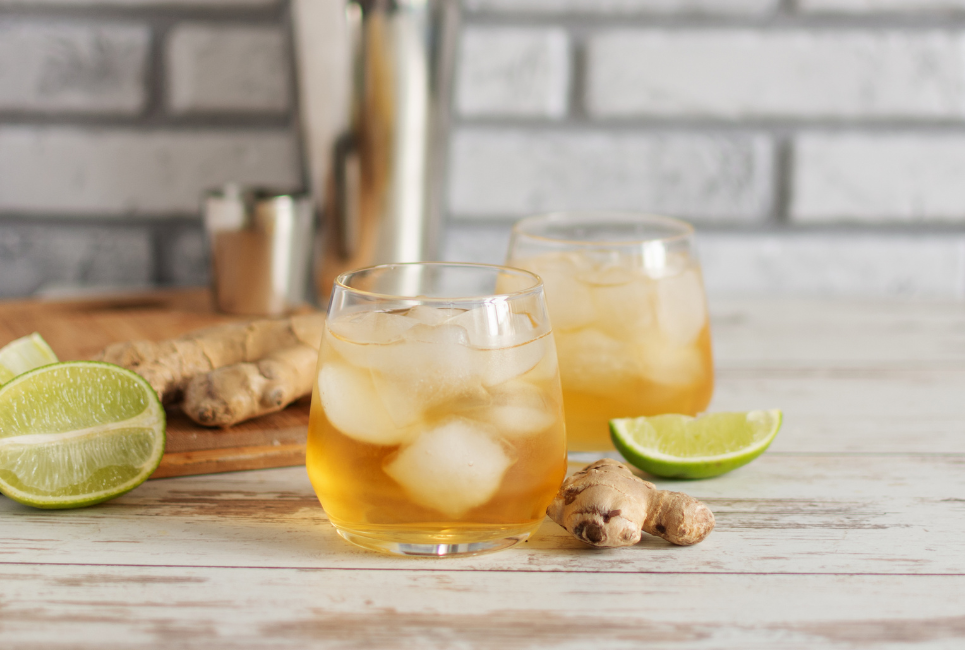
Ginger ale is a carbonated, non-alcoholic beverage that is flavored with ginger. It is thought to have originated in Ireland in the 19th century, although the exact history is unclear.
The first recorded use of the term “ginger ale” was in 1871, when it was mentioned in an advertisement in an American newspaper.
The most common ginger ale recipe is water, sugar, lemon juice, and ginger root. Some variations also include spices such as cloves or nutmeg.
The ginger root is boiled in water to release its flavor, then the other ingredients are added, and the mixture is left to ferment for several days. The result is a refreshing, slightly fizzy drink that can be enjoyed on its own or used as a mixer in cocktails.
13- Mead
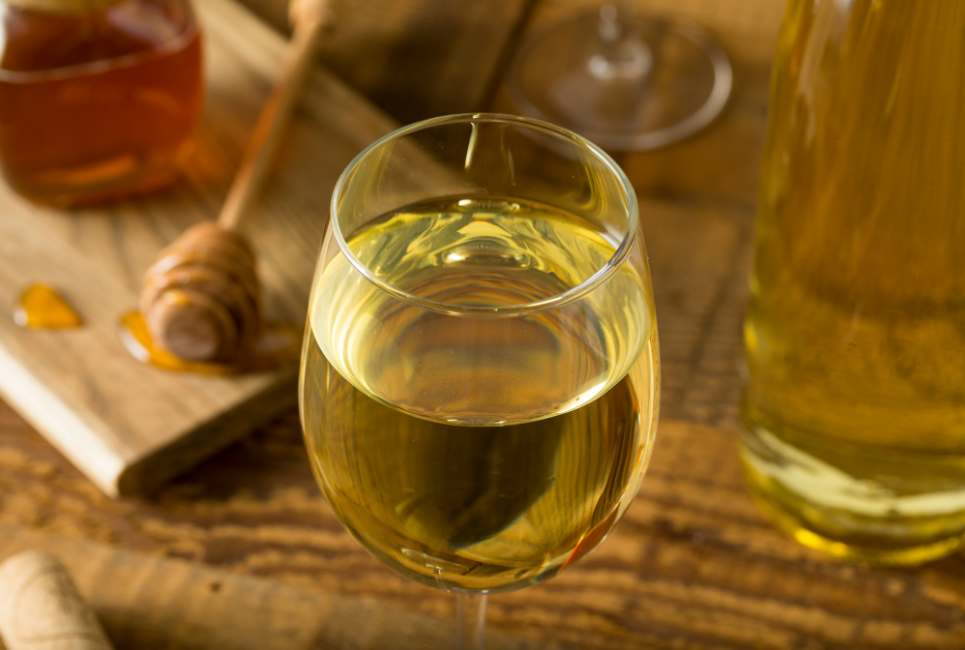
Mead is an alcoholic drink made from fermented honey. First, the honey is diluted with water, and then yeast is added to start the fermentation process.
The first meads were probably brewed accidentally when beekeepers left their honeycombs open, and wild yeasts got into the honey. Mead has been around for centuries and is a popular drink in many different cultures.
Mead can be made with various fruits or spices, depending on the flavor you want to create. Some meads are sweet and fruity, while others are dry and spicy. Mead is often served cold or at room temperature but can also be heated to make a mulled wine.
14- Wine

Wine is an alcoholic beverage made from fermented grapes. Yeasts convert the sugars in the grapes into alcohol, and the different types of wine are created depending on the length of time that the fermentation process takes.
Red wines are made with black grapes, while white wines are made with white or green grapes. This is because the grape’s skin is removed for white wine while it is left on for red wine.
The alcohol content in wine ranges from around 9% ABV for table wines to approximately 16% ABV for dessert wines. Wine has a long history, dating back to ancient civilizations such as Greece and Rome. The Greeks revered wine that it was considered a gift from god.
15- Rice Wine
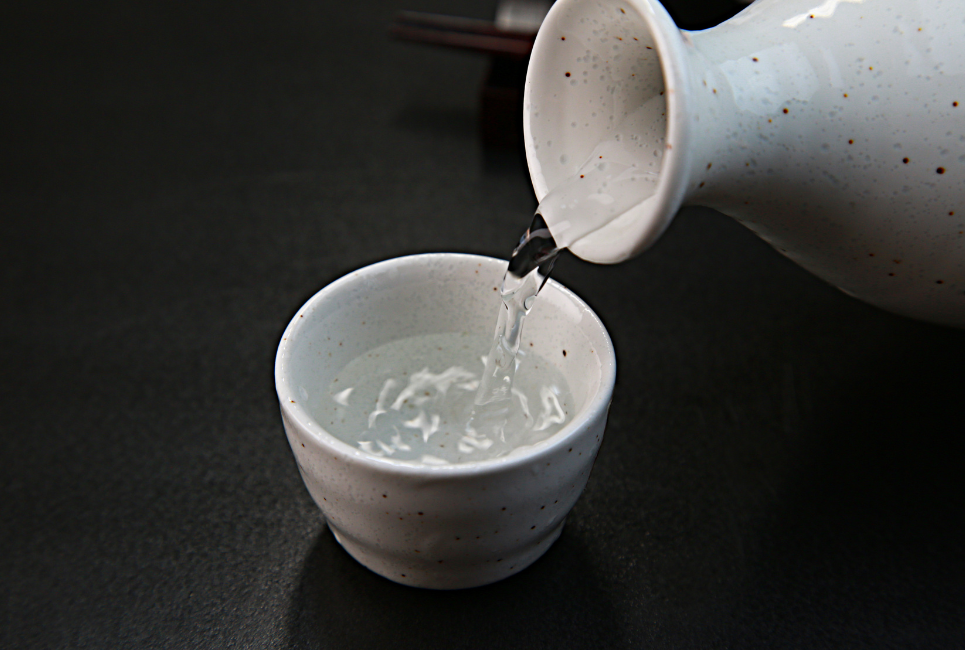
Rice wine is a type of alcoholic drink that is made from rice. Making rice wine begins with the fermentation of steamed rice, followed by adding water and yeast.
The mixture is then left to ferment for a while, after which it is distilled to produce the final product.
Rice wine has a history that dates back thousands of years, and it is thought to have originated in either China or Japan. The word “sake” (the Japanese word for rice wine) is believed to have derived from the Chinese word “jiu” (which means alcohol).
Rice wine is enjoyed worldwide and can be found in wide varieties.
16- Sake
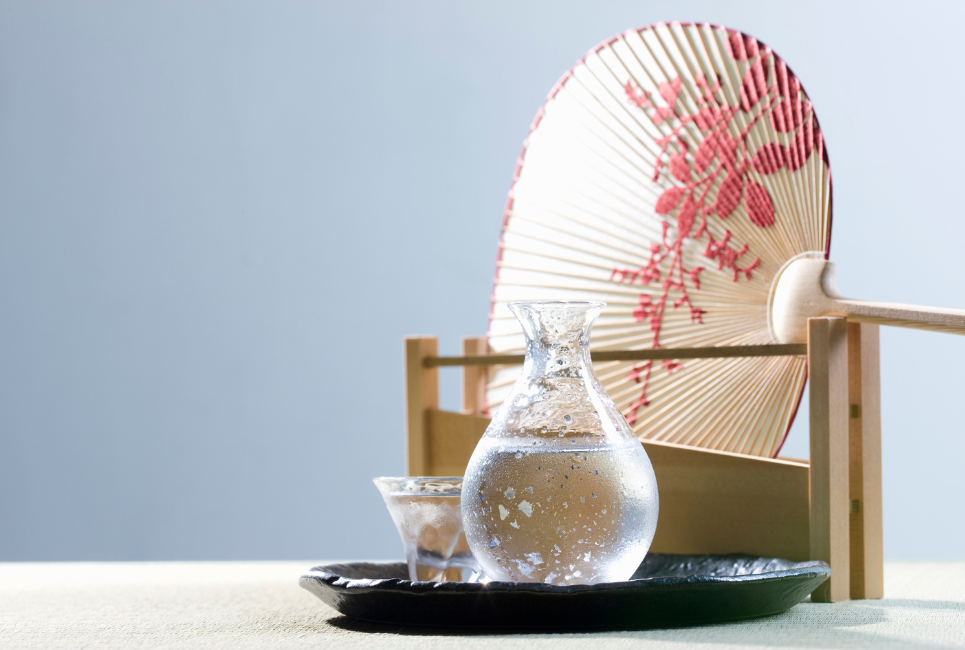
Sake is a Japanese fermented rice wine that has been around for centuries. The traditional sake brewing method involves washing and polishing the rice, soaking it in water, and then fermenting it with yeast.
The final product is a clear, slightly sweet beverage that contains around 15% alcohol.
There are several types of sake, but the most common is junmai-shu, made with only water, rice, and koji (a mold). Other types of sake include:
- Nigori-zake (unfiltered sake).
- Ginjo-shu (premium sake made with polished rice).
- Daiginjo-shu (super premium sake made with even more polished rice).
Sake is typically served in small glasses or cups and can be enjoyed either cold or warm. It is often used in Japanese cuisine and is popular for toasts and special occasions.
17- Kvass
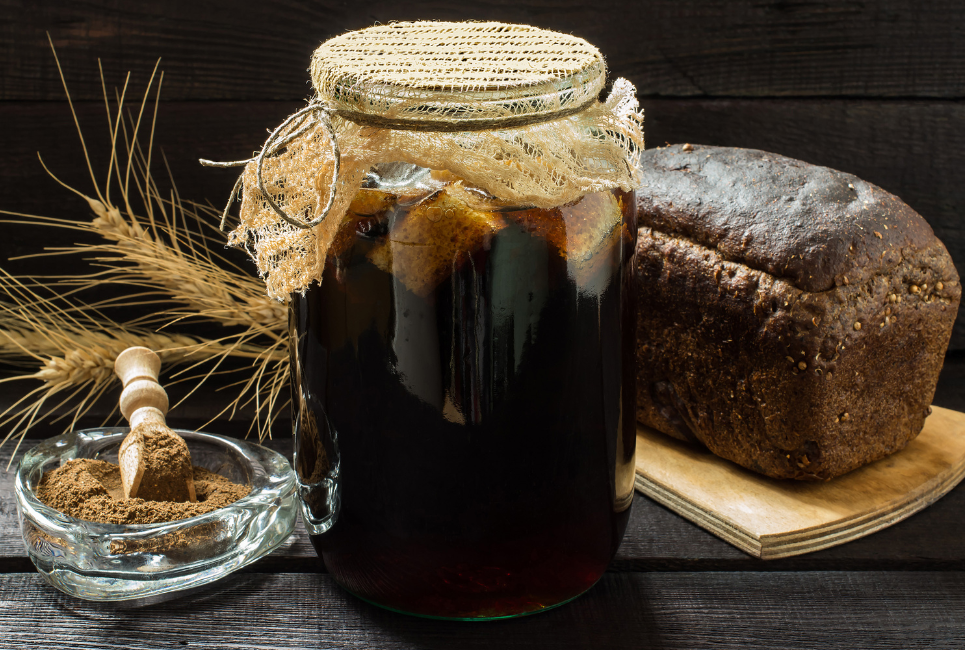
Kvass is a traditional Russian fermented beverage made from bread or rye grains. It has a slightly sour, sweet taste and is typically low in alcohol (1-2% ABV).
Kvass has been around for centuries, and you can find kvass sold commercially in many Eastern European countries and Russia.
The essential ingredients for kvass are water, Yeast, Bread (or rye grains), and sugar (or honey). Traditionally, kvass was made by fermenting black or Dark Rye Bread in water.
The fermentation process would occur naturally using the wild yeast that was present on the bread. Today, most commercially-produced kvasses use a combination of baker’s yeast and lactic acid bacteria to speed up the fermentation process.
Also read: Kombucha vs Kvass Key Differences & Benefits
18- Rejuvelac
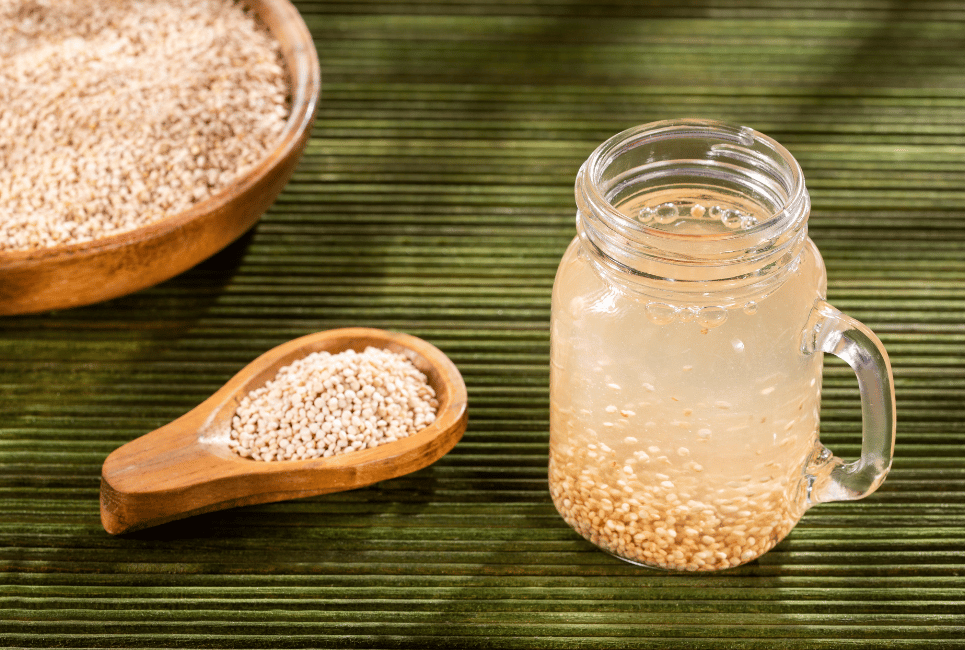
Rejuvelac is a drink made from sprouted grains. The history of Rejuvelac goes back centuries, and the recipe has been passed down through generations.
Rejuvelac is a nutrient-rich drink that is high in enzymes and probiotics. It’s also a great way to add more vitamins, minerals, and antioxidants to your diet. It can be added to smoothies, soups, or salad dressings for a health boost.
19- Tepache
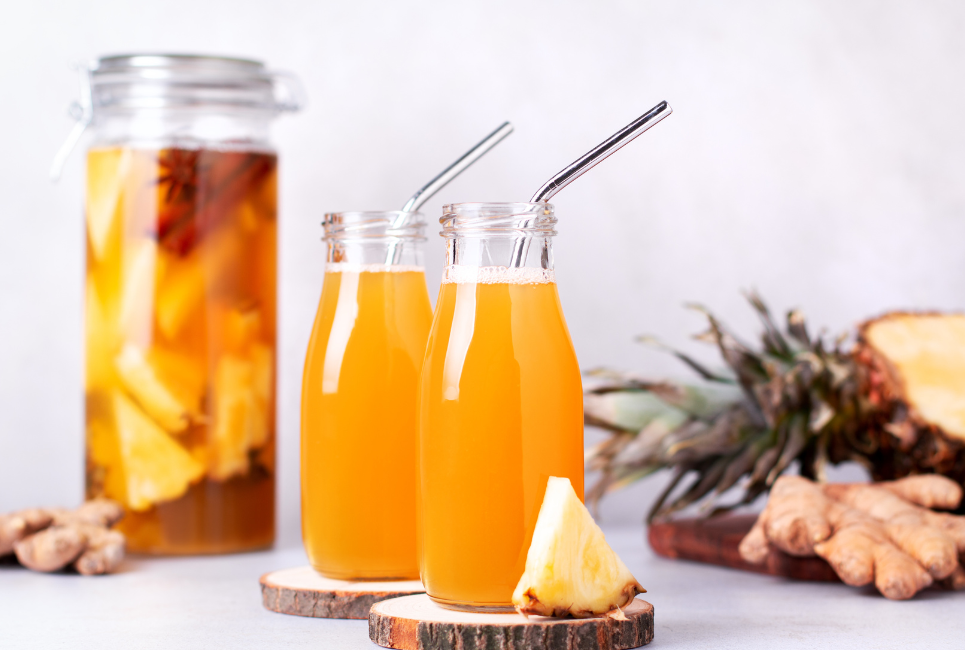
Tepache is a traditional, lightly effervescent, fermented drink from Mexico made with pineapple rinds, water, sugar, and yeast. It has a slightly sweet and sour taste and is sometimes flavored with vanilla or other spices.
The history of Tepache dates back to the pre-Hispanic era when the Aztecs drank a similar beverage called chicha. The Spanish introduced cane sugar to Mexico in the 16th century, later used to make tepache.
Tepache is usually made by boiling pineapple rinds in water for about 30 minutes until they are soft.
The rinds are then strained out, and the remaining liquid is mixed with sugar and yeast. The mixture is left to ferment for 1-3 days, depending on the desired level of sweetness and carbonation.
20- Sweet Potato Fly

Sweet Potato Fly (or SPF) is a fermented drink with sweet potatoes and herbs. It has a light, refreshing taste and is believed to have health benefits such as improving gut health, boosting the immune system, and fighting inflammation.
This fermented drink is thought to have originated in Africa, where sweet potatoes are a staple food. The ingredients and recipe vary from region to region, but typically it contains sweet potatoes, ginger, garlic, honey, and herbs such as basil and mint.
21- Lacto Sodas
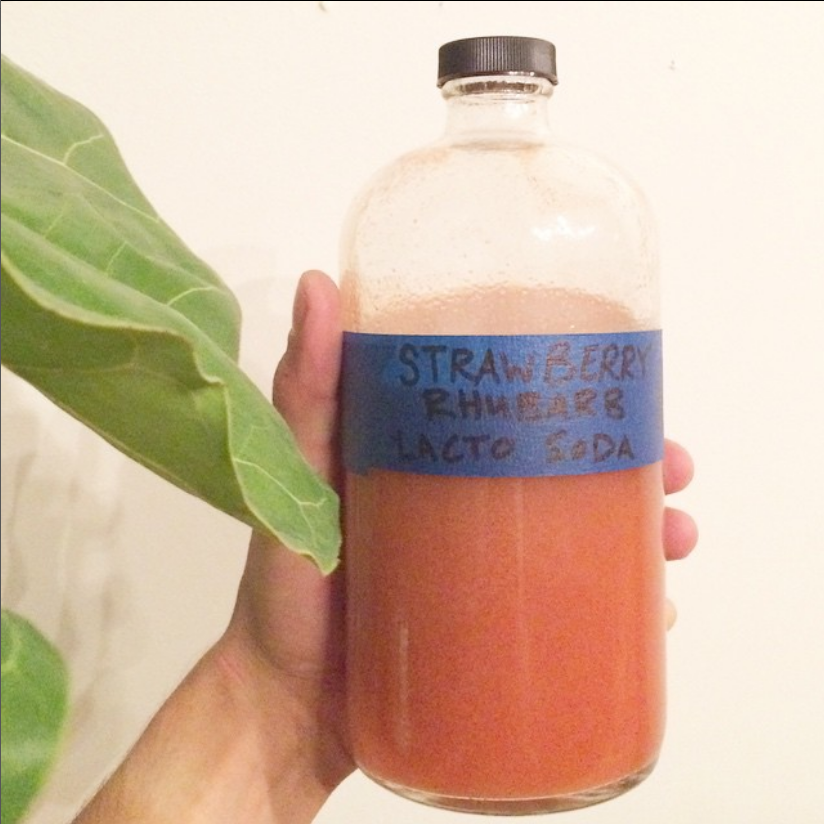
Lacto fermented soda is a drink that has a long history and a variety of ingredients. It is thought to have originated in Europe and was used as a way to preserve milk.
The fermentation process creates lactic acid, which helps to preserve the milk and gives it a slightly sour taste.
The ingredients in lacto sodas can vary, but they typically include water, sugar, yeast, and milk.
The yeast ferments the sugar into alcohol, and the bacteria create the lactic acid during fermentation. Depending on the recipe, Lacto fermented soda can contain other ingredients such as herbs or spices.
22- Lacto Fermented Tea
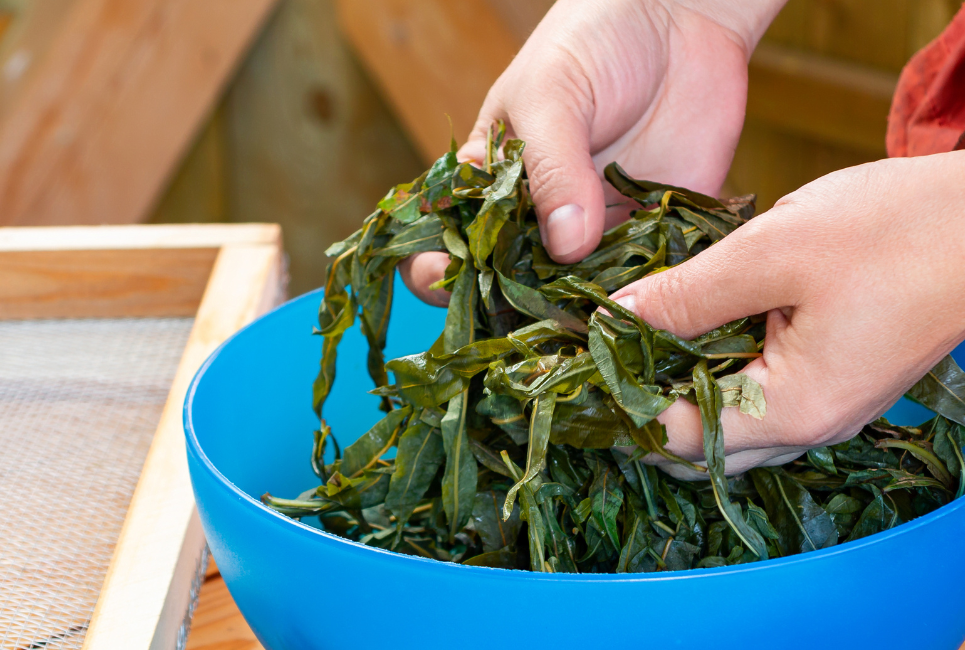
The Lacto fermented tea is a traditional beverage from East Asia made by fermenting tea leaves in a mixture of water and bacteria. The resulting drink is lower in sugar and calories than unfermented tea and has probiotic benefits thanks to the live bacteria.
Lacto fermentation is a process that breaks down carbohydrates into lactic acid, which is a natural preservative.
This process was likely first used to preserve food in East Asia and eventually came to be used to make Lacto fermented tea. The most commonly used bacterium for Lacto fermentation is Lactobacillus, which is found in various fermented foods such as kimchi and yogurt.
23- Ryazhenka

Ryazhenka is a fermented dairy drink that has its origins in Russia and Ukraine. It is made by heating raw milk to just below boiling, then adding a culture of lactobacillus bacteria.
This mixture is then allowed to ferment for 8-12 hours, during which time the lactobacillus bacteria convert the lactose in the milk into lactic acid. This gives Ryazhenka its characteristic tangy flavor.
The final Ryazhenka product will usually contain around 2-3% lactic acid, making it slightly sour and refreshing. Ryazhenka also has lower fat content than regular milk, as much fat is broken down during fermentation.
24- Darassun
Darassun is a Korean fermented drink made from rice, nuruk (a type of yeast), and water. Nuruk is a crucial ingredient in fermentation, giving the glass its characteristic sour flavor.
The origins of darassun date back to the Joseon Dynasty (1392-1910), which was used as a medicinal drink to treat various medical conditions. It is still popular among Koreans for its health benefits, including improved digestion and anti-aging effects.
Darassun is made by soaking rice in water overnight, then adding nuruk and letting the mixture ferment for 3-5 days. The finished product is a cloudy brown liquid with a sour taste and a slightly alcoholic content.
25- Bhaati Jaanr
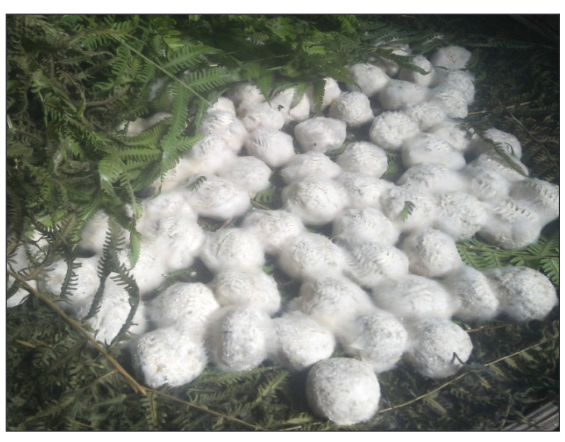
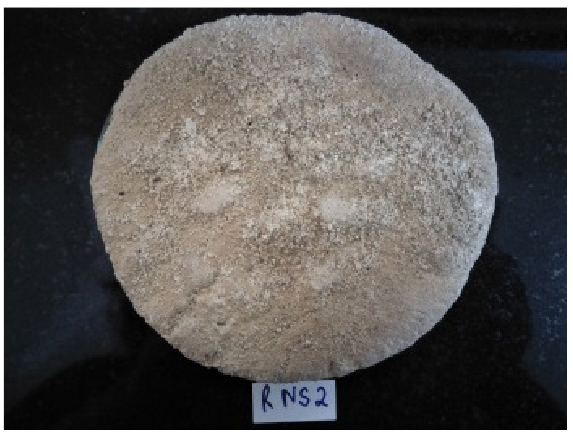
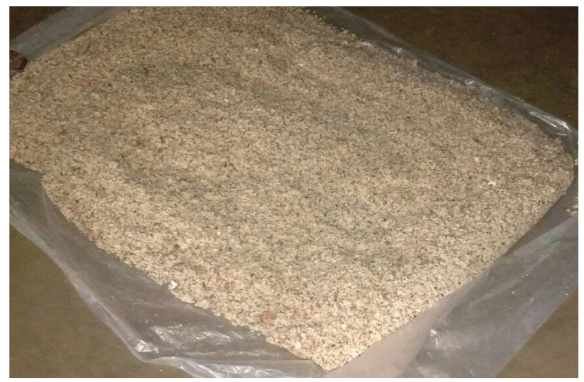
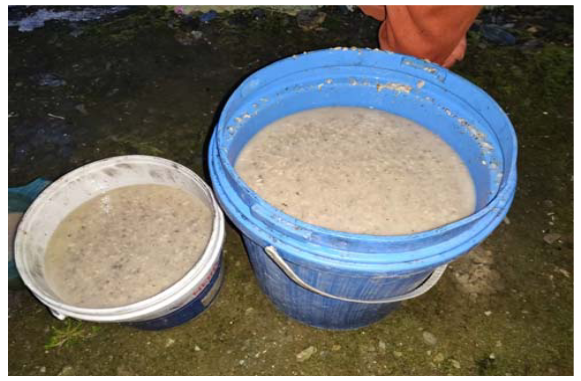
Bharati Jaanr is a fermented drink made from natural ingredients used for centuries in India. The main ingredient in this drink is rice, which is first cooked and then fermented with yeast. This fermentation process gives the glass its characteristic sour taste.
Bharati Jaanr has a long history in India, and its exact origins are unknown.
26- Yakju

Yaku is a lightly carbonated drink that was initially created in Korea. It is made with rice, water, and yeast and has a slightly sweet and sour taste.
The drink dated back to the 4th century BC and was originally used as a medicinal beverage.
It is thought to have many health benefits, including improved digestion, better skin health, and a more robust immune system. Yaku is also high in antioxidants, which can help protect the body against free radicals and damage caused by aging.
27- Chiang
Chiang is a traditional Nepali fermented drink made from rice and millet. It has a slightly sour and sweet taste and is usually served cold or at room temperature.
The history of Chiang is somewhat unclear, but it is thought to date back to the 15th century. It was likely created to preserve milk and make it last longer, as milk was a staple of the Nepali diet.
Other ingredients such as herbs, spices, & fruits were also added to Chiang to give it more flavor.
Today, Chiang is still made much the same way as it was centuries ago. Rice and millet are cooked together until they form a thick porridge.
28- Makgeolli
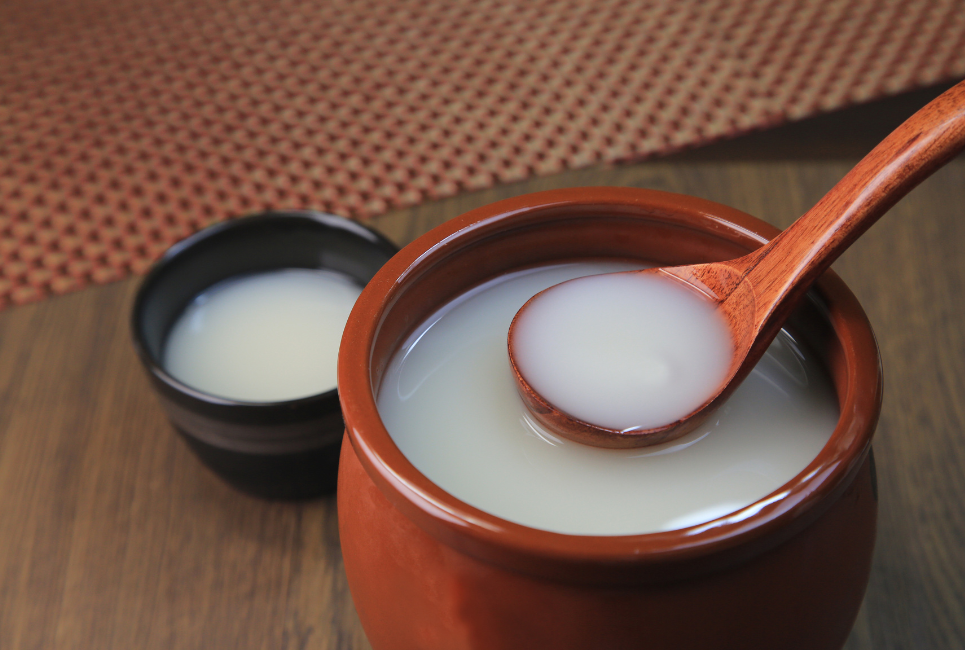
Makgeolli is a traditional Korean fermented drink made from rice, wheat, or barley. The fermenting process can take a few days to a couple of weeks, and the final product tastes sweet and sour.
Makgeolli was once considered sacred by the Koreans and was often served at ceremonies and special occasions. It is still popular, and many different brands and drink variations are available.
29- Toddy
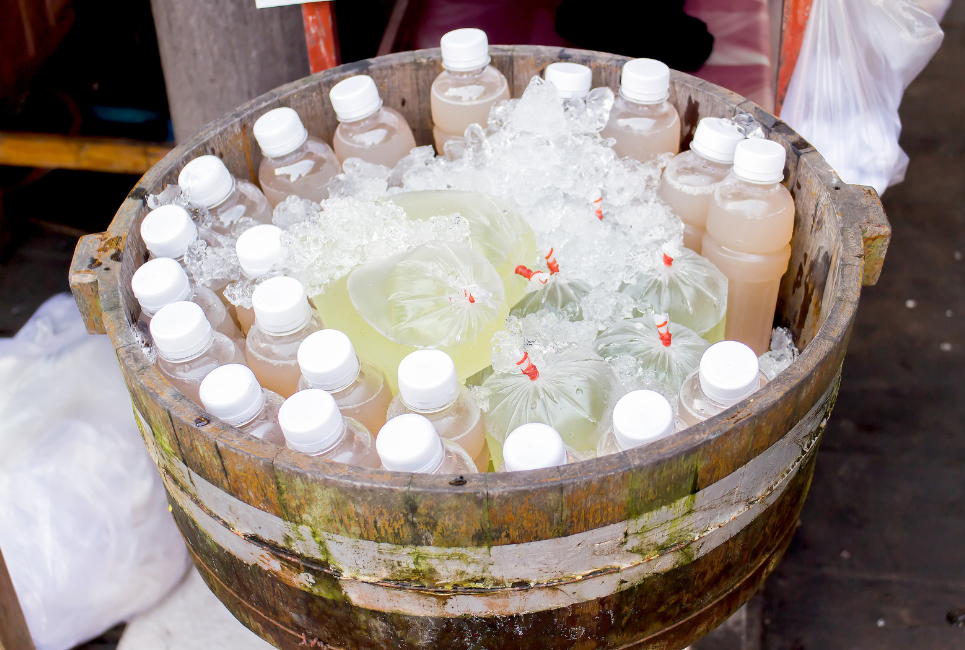
Toddy is a fermented drink made from the sap of palm trees. It is popular in many tropical countries and has a variety of uses.
The history of Toddy is thought to date back to ancient times. In India, it was traditionally used as a drink for religious ceremonies. In tropical regions, it was used as a refreshment or tonic. Toddy was also used as a medicine to treat fever, diarrhea, and indigestion.
The main ingredient in toddy is the sap of the palm tree. This sap is rich in carbohydrates and yeast, which are necessary for fermentation. For flavor, other ingredients may include water, sugar, and fruits or spices.
30- Pozol
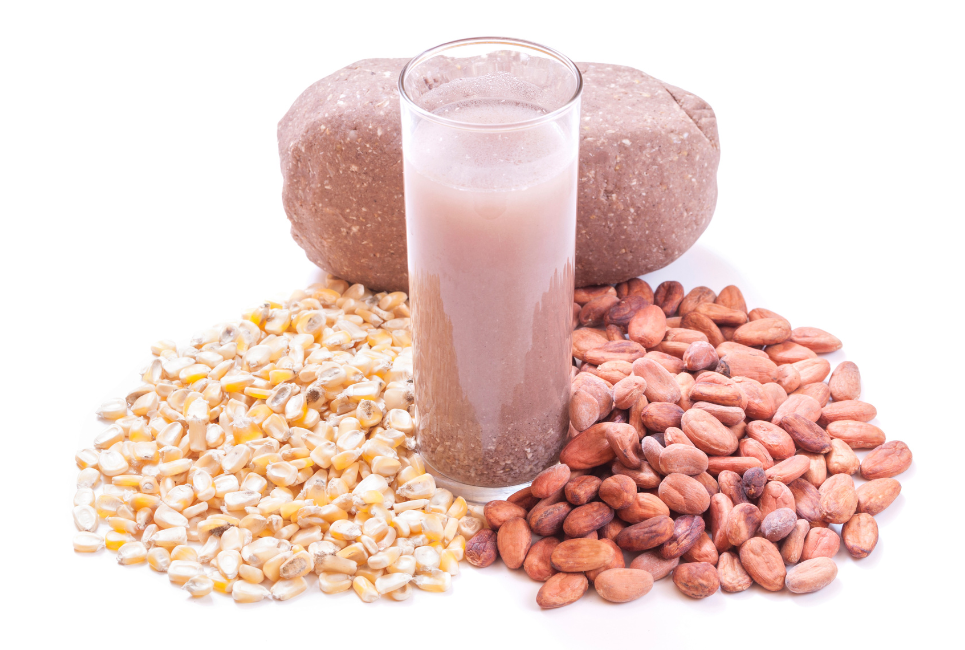
Pozol is a traditional Mexican drink made from fermented corn dough. It dates back to the time of the Aztecs, who used it as a nutritious and energizing food for their soldiers.
The main ingredients in pozol are ground maize (masa harina or nixtamalized corn flour), water, and microbes (usually moldy corn husks or sourdough starter). Pozole can be enjoyed fresh or aged and is often flavored with chocolate, spices, fruit, or even meat.
31- Tongba
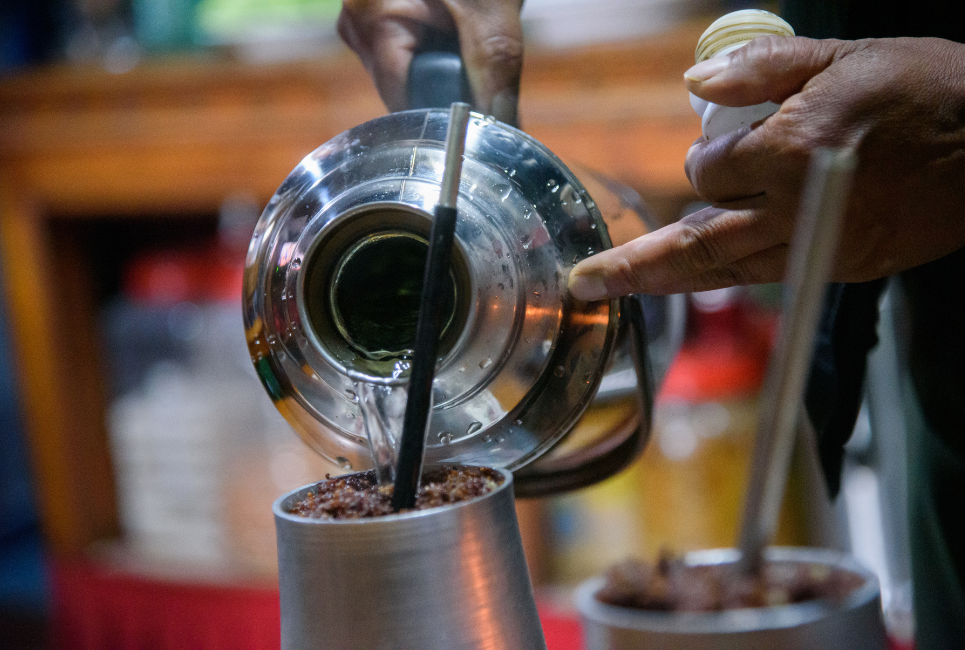
The history of Tongba is a bit fuzzy, but the most common story is that it originated in the hills of Nepal. Supposedly, a young girl was carrying water to her village when she spilled some on some white ferns.
When she returned to get more water, she noticed that the ferns had turned brown. Intrigued, she tasted them and found that they were pretty tasty. So she brought the discovery back to her village, and Tongba was born!
As for the ingredients, Tongba is made with black millet flour, rice flour, and yeast. The yeast ferments the black millet flour and rice flour to create a sourdough that gives Tongba its unique flavor.
Tongba is usually served with various herbs and spices, as well as milk or cream to balance the sourness.
32- Pur-eh Tea
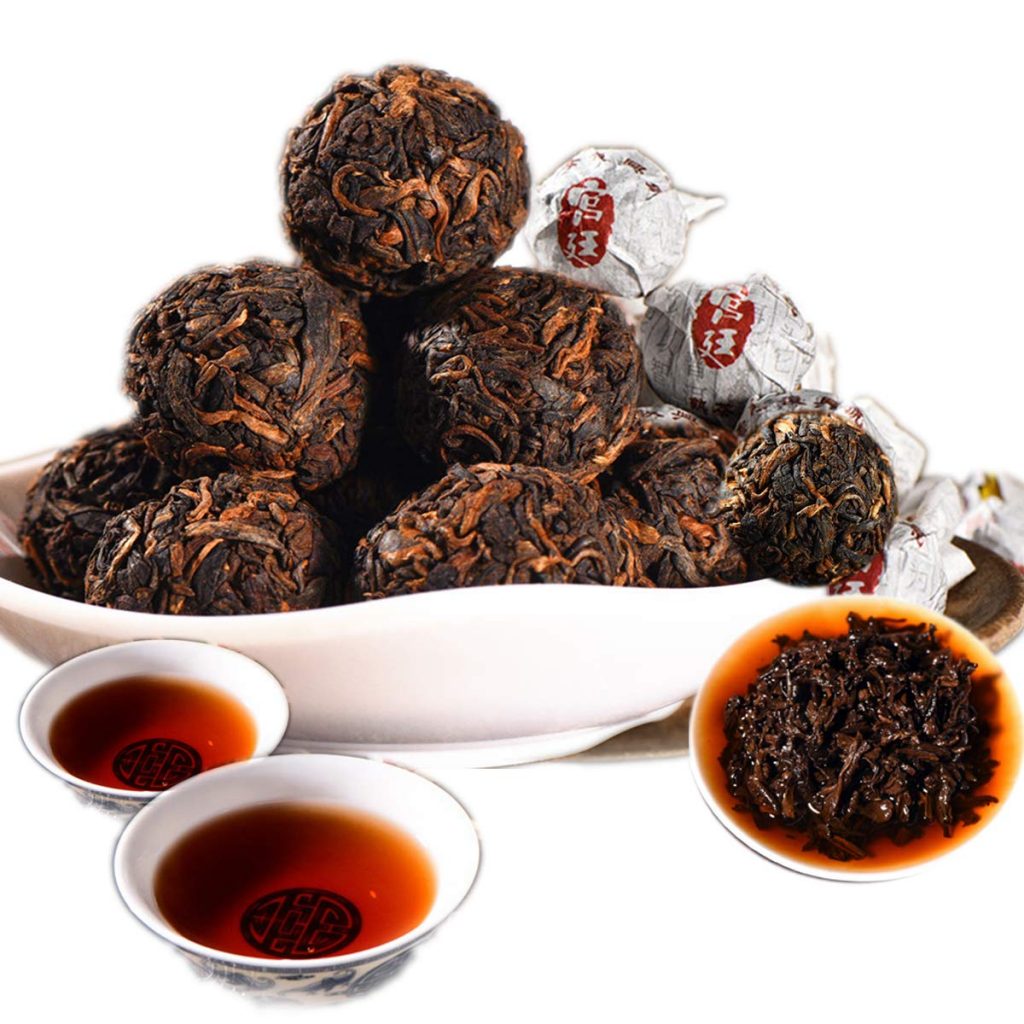
Pur-eh Tea is a fermented drink with black tea, sugar, and bacteria. It was developed in Korea in the early 1990s as a health drink and has become famous throughout East Asia.
The fermentation process produces lactic acid, which gives Pur-eh Tea its sour taste and helps preserve it. The drink is high in antioxidants and probiotics, which benefit gut health. It also has low levels of caffeine and calories.
Pur-eh Tea can be enjoyed hot or cold and is available in many different flavors, including apple, grapefruit, peach, and strawberry.
33- Amazake
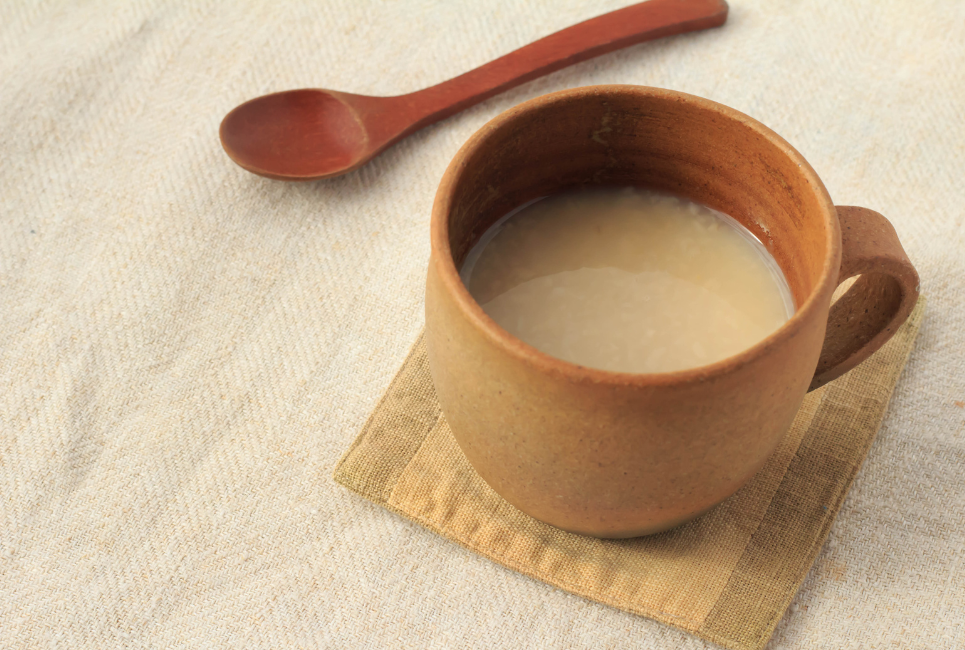
Amazake is a drink that is made from fermented rice. First, the fermentation process breaks down the starch in the rice, which turns it into sugar.
Next, yeast is added to the mixture, converting the sugar into alcohol. Finally, a bacteria is added to the mixture, which converts the alcohol into carbon dioxide and vinegar.
The history of amazake dates back more than 2,000 years ago. It was first used as a medicinal drink to help treat various illnesses and injuries.
In addition, amazake was also thought to be beneficial for increasing energy levels and vitality. Today, amazake is still popular in Japan and is often served as a dessert or beverage. It has a sweet and sour taste and can be enjoyed hot or cold.
34- Koozh: or Koozhu

Koozh is an ancient fermented drink that originated in the state of Tamil Nadu in southern India. The drink is made by fermenting rice flour with probiotic culture, a popular beverage throughout India.
Some health benefits of koozh include improved digestion, reduced inflammation, and better blood sugar control. The drink is also high in probiotics, essential minerals, and vitamins, making it a healthy choice for people looking for a nutritious beverage.
35- Kanji
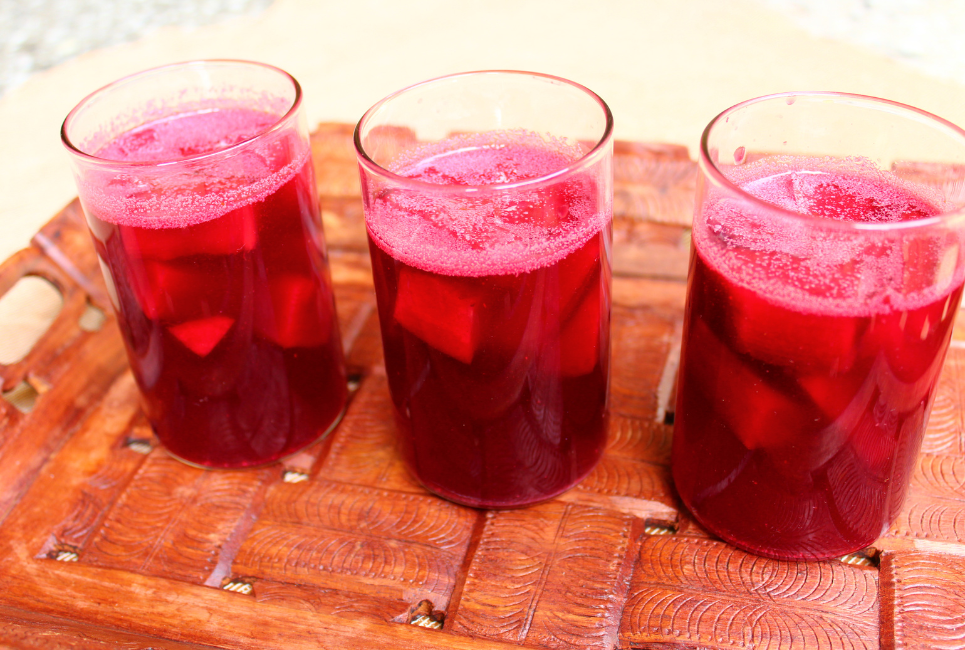
Kanji, a popular fermented drink in India, is made from grains and vegetables. The History of Kanji dates back to ancient times when it was used as a natural cleanser and detoxifier.
The ingredients in Kanji are straightforward – just wheat, pulses, fruits, and vegetable. However, the fermentation process gives Kanji its unique flavor and health benefits.
During fermentation, the carbohydrates in the wheat and vegetables are broken down by bacteria and yeast into lactic acid, alcohol, and carbon dioxide.
This process not only creates the sour, tangy taste of Kanji but also increases its nutritional value. Fermented foods are richer in vitamins, minerals, and antioxidants than their non-fermented counterparts.
Kanji is an excellent source of probiotics, which are live microorganisms that offer numerous health benefits. Probiotics improve digestion, boost immunity, and even help in weight loss. Kanji is also rich in lactic acid, which has been shown to have antimicrobial and anti-inflammatory properties.
36- Handia
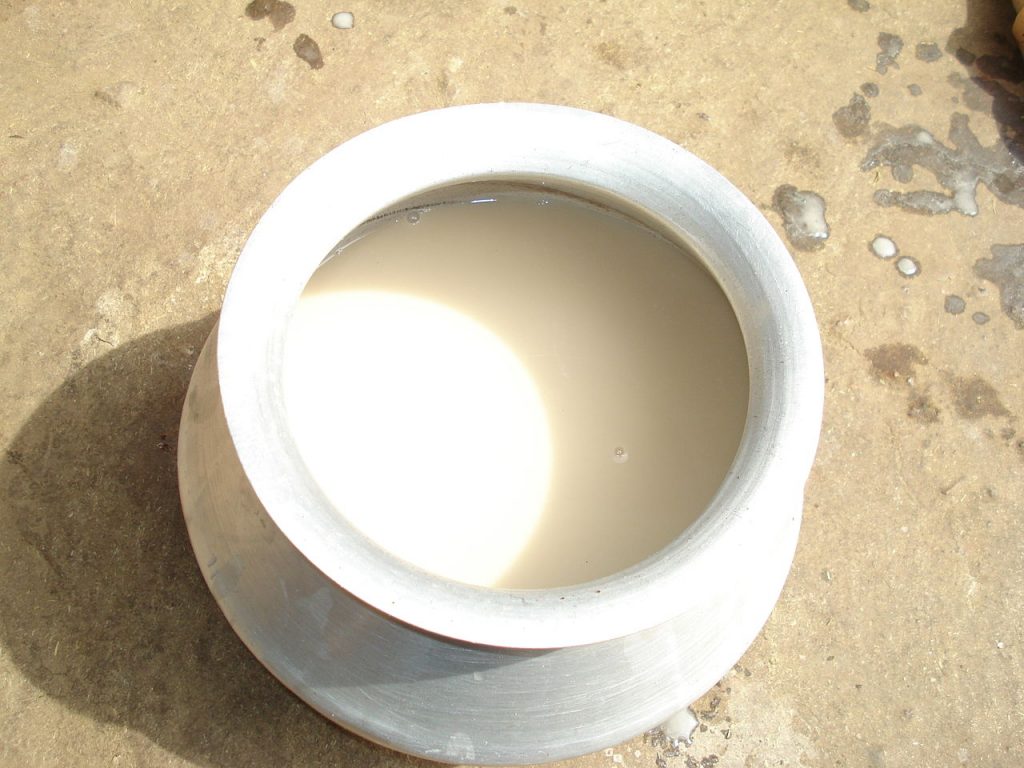
Handia is a traditional fermented drink from the state of Bihar in India. It is made by fermentation of rice and sometimes includes milk, fruits, and spices. The fermentation can take place within two weeks.
The ingredients and history of handia are somewhat shrouded in mystery – it is thought to have originated among the thr (Mritak) community in Bihar.
They were historically associated with alcohol production. However, there are now many different recipes for handia that have been passed down through the generations.
Typically, handia is made by first soaking rice in water for several hours or days. Once the rice has softened, it is mashed into a paste with milk and water.
This mixture is then placed in a container and left to ferment. During the fermentation process, handia will develop a frothy head, similar to that of beer.
Once fermentation is complete, handia is typically served chilled, with ice cubes and fruits added for flavor.
37- Jun tea
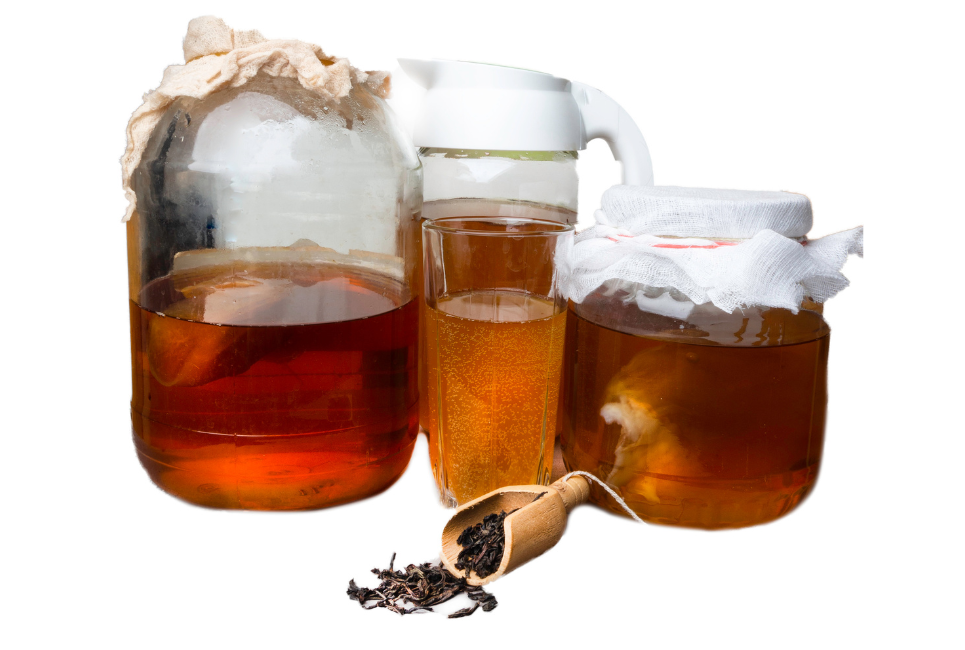
Jun tea is a fermented drink made from the leaves of the Camellia sinensis plant. It is also known as kombucha, kava, or cold brew tea.
The fermentation process creates beneficial enzymes and probiotics that help promote gut health. Jun tea has been enjoyed for centuries and is said to have originated in China.
The main ingredient in jun tea is black tea leaves, fermented with a symbiotic culture of bacteria and yeast (SCOBY).
During fermentation, the SCOBY breaks down the glucose in the black tea leaves into ethanol and acetic acid, which gives jun tea its slightly sour and effervescent flavor. Jun tea can be enjoyed plain or flavored with fruits, herbs, or spices.
38- Fermented Coffee
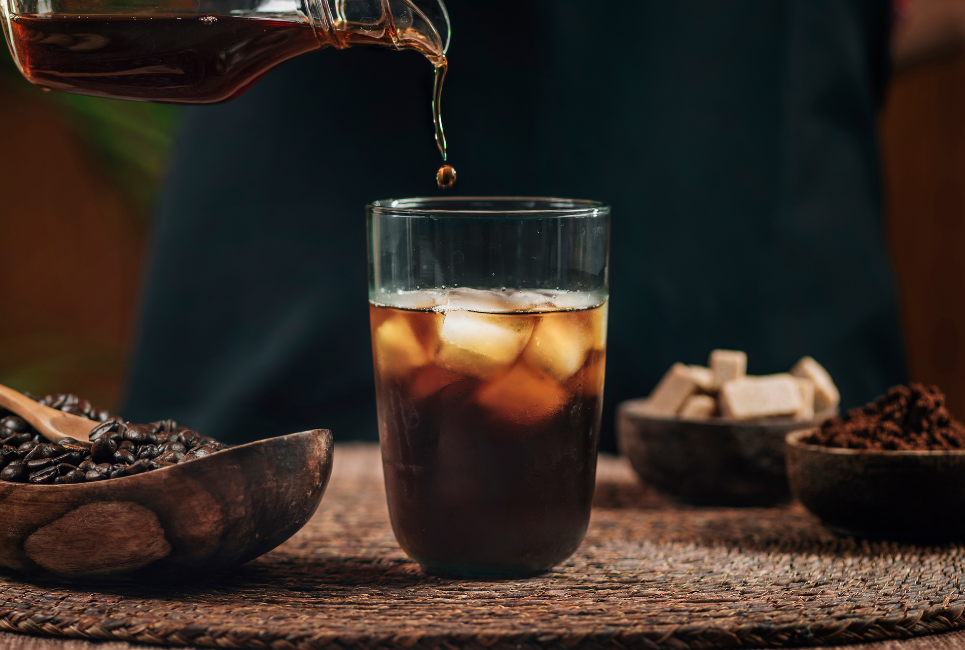
The origins of fermented coffee date back to ancient Ethiopia, where coffee was first cultivated. The coffee beans were fermented slowly over days or weeks to achieve the desired flavor profile. This process is still used today by some specialty coffee manufacturers.
The key ingredients in fermented coffee are, of course, coffee beans and water. The beans are typically roasted before fermentation to bring out their flavor. Other common ingredients include yeast and sugar.
Fermented coffee has a unique taste that is often described as earthy, musty, or even muddy. It is said to have lower acidity than non-fermented coffees, and some people find it easier on the stomach. Fermented coffee is also said to have more antioxidants than other types of coffee.
39- Smreka
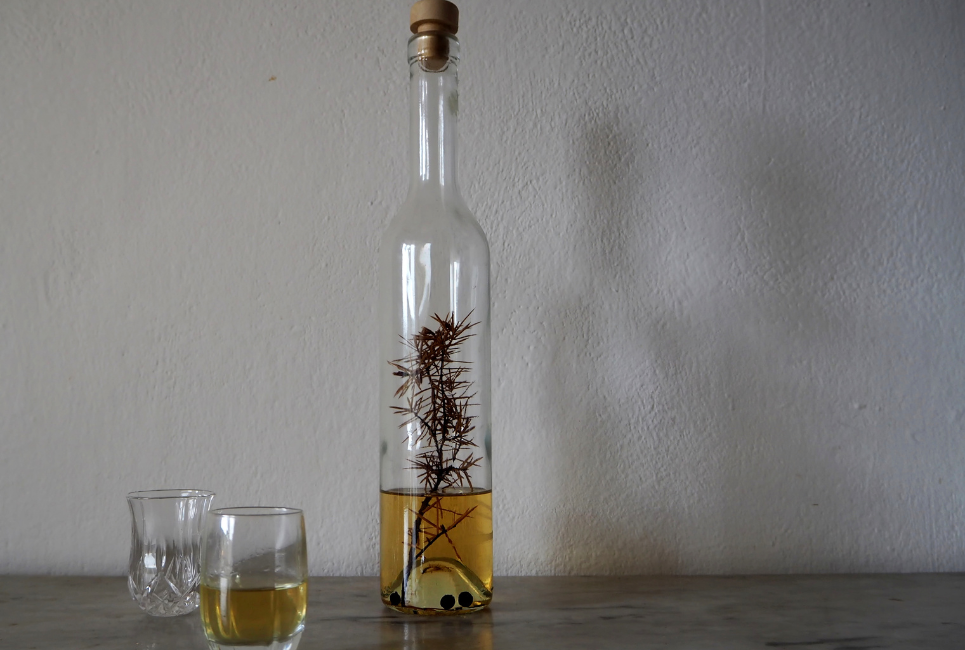
Smreka is a fermented drink made from beech tree sap and dates back to the early days of Slovenian history. The word “smreka” means “beech tree” in Slovenian, and the drink is named after this key ingredient.
Sap from the beech tree was once a common sweetener in Slovenia, and it was used to make various drinks. Over time, people ferment the sap to create multiple alcoholic beverages. One of these Fermented drinks was Smreka.
Originally, Smreka was made by simply fermenting beech tree sap with water and yeast. However, over time, people began to add different ingredients to the mix, such as fruits and spices. Today, Smreka is made with various recipes, but the essential ingredients remain the same: beech tree sap and yeast.
40- Dark Tea
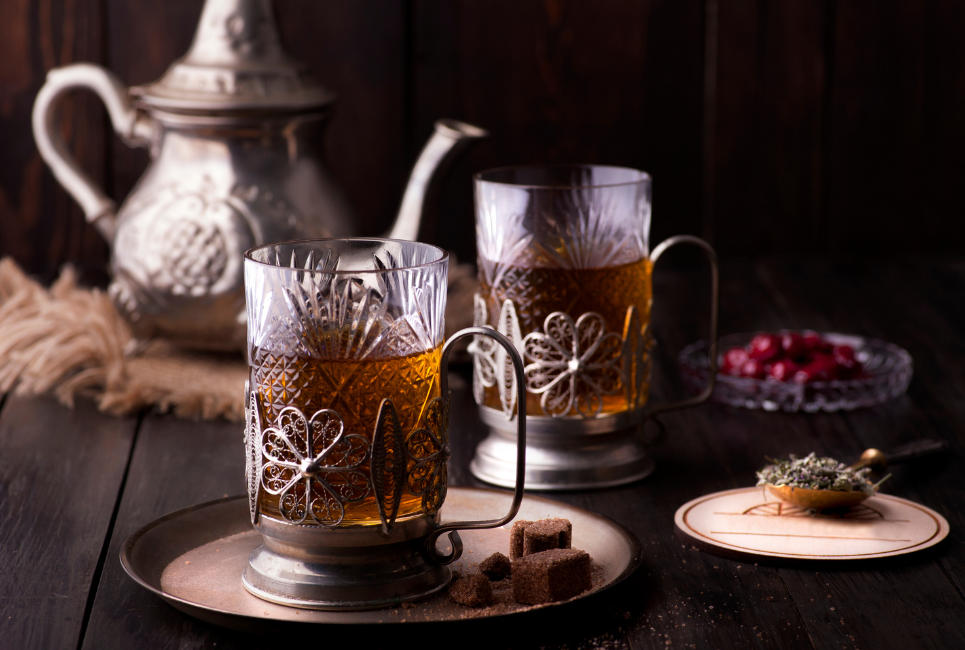
The history of dark tea fermented drinks is a long and complicated one. The drink is thought to have originated in Southwest China and Tibet, and it’s made from black tea leaves that are fermented for a more extended period than regular black tea. This gives the drink a more robust flavor and a higher caffeine content.
The ingredients of dark tea fermented drink vary depending on the region where it’s made, but it typically contains black tea leaves, sugar, yeast, and water. Fermentation takes place over several weeks or months, resulting in a thick, black liquid high in antioxidants and caffeine.
Final Thoughts
If you are looking for a delicious and healthy way to improve your gut health, we suggest trying fermented drinks. There are many different drinks, so find one that sounds appealing to you and enjoy the benefits.
So, in this post, we’ve highlighted some of our favorite fermented drinks and shared tips on how to pick the right one for you. So, check out our recommendations and give one or more of these drinks a try!

